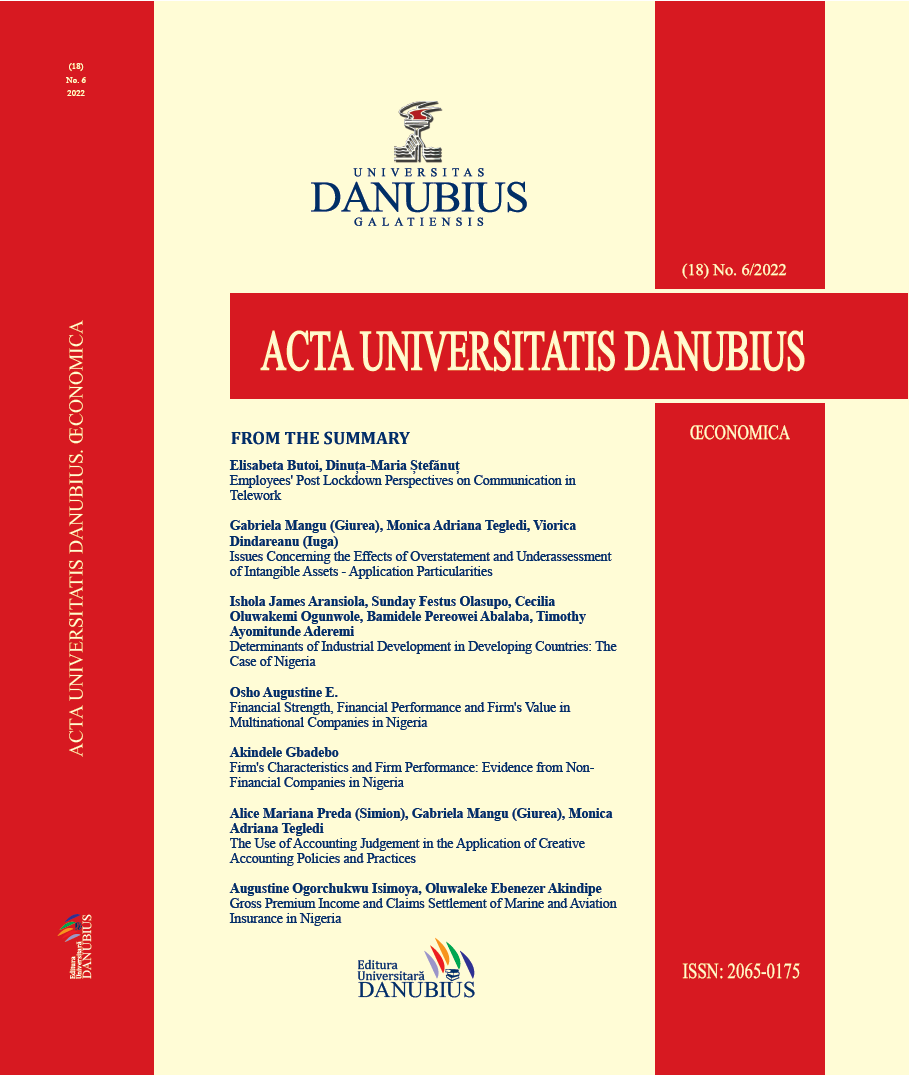Issues Concerning the Effects of Overstatement and Underassessment of Intangible Assets - Application Particularities
Keywords:
intangible assets; overstatement; detraction; IAS; IFRSAbstract
The accurate assessment of the intangible assets is a significant challenge for most entities, regardless of the industry sector. However, situations can arise in accounting where intangible assets may be significantly detracted or overstated and we have chosen to present some of the possible effects of this phenomenon. In this sense, there were analyzed practical aspects regarding the financial statements’ distortion through the overstatement and, respectively, the detraction of intangible assets, as these meant to be recognized in the financial statement and might influence the economic entity’s financial indicators
References
Anghel, I. (2008), Analiza și evaluarea capitalului intelectual și a activelor necorporale, publicat în Theoretical and Applied Economics, nr. 3 (520), București .
Baruch, L. (2003), Remarks on the measurement, valuation, and reporting of intangibles, publicat în FRBNY Economic Policy Review/September 2003.
Brady, R., Beach, R. & Skmorucha, K. (2003), Determining and preserving the assets of dotcoms, Delaware journal of corporate law.
Cassidy, J. (2002), Dot.Con: The Greatest Story Ever Sold, New York and London: Allen Lane.
Chatzkel, J. (2003), The collapse of Enron and the role of intellectual capital publicat în Journal of Intellectual Capital MCB UP Ltd.
Doppegieter, J. & Zoller, M. (2003), Managing Intangible Assets to Leverage Shareholder Value Working Paper, Bruchsal, December 2003.
Dumitrana, M., & Chirața, C. (2011), Bazele contabilității. Ediția a V-a, Editura Universitară, București.
García-Ayuso, M. (2003), Factors explaining the inefficient valuation of intangibles, Accounting, Auditing & Accountability Journal MCB UP Ltd.
Gerzema, J. (2008), The Brand Bubble. The Looming Crisis in Brand Value and How to Avoid It, New York; Jessey-Bass.
Gheorghiu, A. (2010), Analiză-diagnostic și evaluarea întreprinderii, Editura Victor, București.
Low, J. (2000), The Value Creation Index – Abstract, publicat în Journal of Intellectual Capital, No. 3/2000, United Kingdom.
Ristea, M., et al. (2009), Contabilitatea societăților comerciale – Volumul 1, Editura Universitară, București.
ANEVAR, (2014), Standarade Internaționale de Evaluare , București.
OMFP nr. 1.802/2014 pentru aprobarea Reglementărilor contabile privind situațiile financiare anuale individuale şi situațiile financiare anuale consolidate.
CECCAR, (2015), IFRS Standardele Internaționale de Raportare financiară, Editura CECCAR, București.
CAFR, (2019), Ghid privind implementarea Standardelor internaționale de Audit, Standardele 240 „Responabilitatea auditorului de a lua în considerare frauda într-un audit al situațiilor financiare”; 320 „Pragul de semnificație în audit” și 540 „Auditorul estimărilor contabile conținute în situațiile financiare”.
Downloads
Published
How to Cite
Issue
Section
License
Copyright (c) 2022 Gabriela Mangu (Giurea), Monica Adriana Tegledi, Viorica Dindareanu (Iuga)

This work is licensed under a Creative Commons Attribution-NonCommercial 4.0 International License.
The author fully assumes the content originality and the holograph signature makes him responsible in case of trial.


